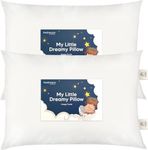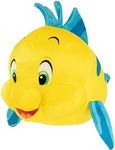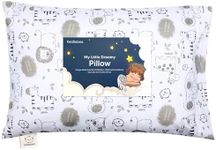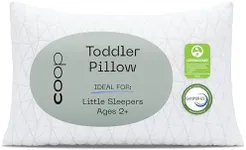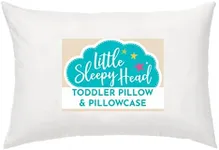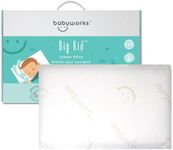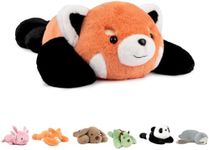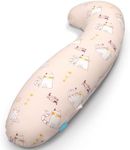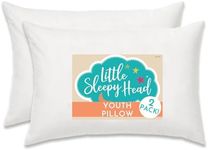Buying Guide for the Best Pillow For Kids
Choosing the right pillow for kids is important for their comfort, sleep quality, and healthy development. Kids have different needs than adults, so it's essential to focus on factors that support their growing bodies and ensure safety. When picking a pillow, consider your child's age, sleeping habits, and any allergies or sensitivities. The right pillow can help your child sleep better and wake up refreshed.Pillow SizePillow size refers to the dimensions of the pillow, and it's important because a pillow that's too large or too small can affect your child's comfort and sleep posture. For young children, a smaller, child-sized pillow is usually best, as it fits their smaller frames and helps keep their head and neck aligned. As children grow, you can consider moving to a larger pillow, but always make sure it matches their body size. Choosing the right size helps prevent neck strain and supports healthy sleep.
Pillow Loft (Height/Thickness)Pillow loft is the height or thickness of the pillow when it's lying flat. This is important because it affects how much support the pillow gives to your child's head and neck. Low loft pillows are thinner and are usually best for younger children or those who sleep on their stomachs, as they help keep the neck in a neutral position. Medium loft pillows work well for side and back sleepers, providing enough support without pushing the head too far forward. High loft pillows are thicker and are generally not recommended for young kids, as they can cause neck strain. Consider your child's sleeping position and age when choosing the right loft.
Pillow Fill MaterialThe fill material is what the pillow is made of inside, and it affects comfort, support, and potential allergies. Common fill materials include polyester, memory foam, down, and natural fibers like cotton. Polyester is lightweight and hypoallergenic, making it a popular choice for kids. Memory foam offers good support but can be too firm for some children. Down and feather pillows are soft but may cause allergies in sensitive kids. Natural fibers are breathable and gentle. If your child has allergies or sensitive skin, look for hypoallergenic materials. The right fill material depends on your child's comfort preferences and any health considerations.
Pillow FirmnessFirmness describes how soft or hard the pillow feels. This is important because it affects how well the pillow supports your child's head and neck. Soft pillows are comfortable but may not provide enough support, especially for side sleepers. Medium firmness is usually a good balance for most kids, offering both comfort and support. Firm pillows provide more support but may feel too hard for some children. Consider your child's sleeping position and comfort preferences when choosing firmness. A pillow that's too soft or too firm can lead to discomfort or poor sleep posture.
Pillow Cover MaterialThe cover material is the fabric that surrounds the pillow, and it's important for comfort, breathability, and ease of cleaning. Cotton covers are soft, breathable, and easy to wash, making them a great choice for kids. Some covers are made with special hypoallergenic or moisture-wicking fabrics, which can be helpful for children with allergies or who sweat at night. Always choose a cover that feels comfortable to the touch and is easy to remove and wash, as kids' pillows need regular cleaning.
Safety and CertificationsSafety and certifications refer to whether the pillow meets certain health and safety standards, such as being free from harmful chemicals or allergens. This is especially important for kids, as their bodies are more sensitive. Look for pillows that are certified by recognized organizations for being non-toxic and hypoallergenic. This ensures that the pillow is safe for your child to use every night. Always check labels and product descriptions for safety information.
